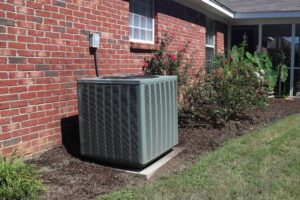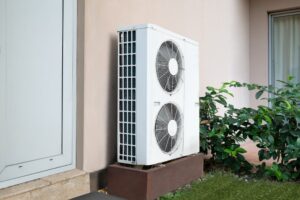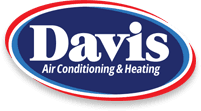What You’ve Wanted to Know But Never Asked About HVAC Installation
The HVAC system in your Fort Bend County, Texas, house is central to the comfort of your home and family no matter what time of year. Unfortunately, even the best systems don’t last forever. After 10, 15, or 20 years, the system will eventually reach the end of its tenure. That’s when the problem of finding a new one begins. While the thought of the perfect temperature is indeed soothing, there are many aspects of installation that are intimidating. If you’ve ever had questions about HVAC systems but were hesitant to ask, here’s a guide to get you through from start to finish.
What HVAC Size Do I Need?
The size and capacity of your HVAC system is one of the most important aspects to get the ideal heating and air conditioning units for your home. If you buy one too small, it won’t adequately heat or cool the home, while one that’s too large will rack up insane energy bills, also failing to give you the comfort you desire. A common misconception is that bigger is better. However, a properly sized unit adequately runs through the right amount of cycles without losing its efficiency.
Air conditioners are the most sensitive when it comes to size issues, and they come in sizes ranging from 1.5 tons to 5 tons. In between, they go through half-ton increments. When we come out to size your air conditioning needs, we use a load formula, which approximates your cooling needs. This accounts for many factors including square footage, outside shade, if there’s a basement, and so forth. If you want a quick idea, this old-school formula should suffice. In this instance, we’ll use a 2,000 square foot home.
- Take the square footage of the home and multiply it by 30. (2,000 X 30=60,000)
- Take this number and divide it by 12,000. (60,000/12,000=5)
- Subtract 1 from this number. (5-1=4)
- From this example, you’d need a 4-ton air conditioner.
This isn’t an exact method, but it does give you a ballpark to start your shopping quest for the ultimate air conditioner. When an HVAC technician does the actual sizing for a new system, they should always use Manual J calculations for a more accurate determination of size.
Furnaces measure their output in terms of BTUs, or British Thermal Units. In warmer Texas climates, you don’t need nearly as much heating power as say, Minnesota. As a rule of thumb, you should take the square footage of your home and multiply by 30 to get the number of BTUs necessary for adequate heating. We’ll take the same 2,000 square foot house as an example:
- Take square footage and multiply by 30. (2,000 X 30=60,000)
- In this example, you’d need a 60,000 BTU furnace to properly heat the home.
Once again, it’s important to mention that these formulas aren’t exact. In any case, they’ll give you a better idea of cost, and from there, we can help you make the decision.
Which HVAC Systems Should I Consider?
Only a few decades ago, the choice of an HVAC system was relatively limited. Most companies offered basic air conditioners and furnaces, while few chose to branch out to other solutions. However, HVAC has evolved rapidly, and today there are more solutions than ever. Sure, there are still traditional air conditioners and furnaces, but many now come equipped with the ENERGY STAR logo. This means that they’ve been approved by the government as energy-saving units. The best part is that they provide the same comfort and quality as traditional systems.
If you’re looking to get a new furnace, you have plenty of options. While electric furnaces are becoming more popular, oil and gas furnaces are a satisfactory option because of their efficiency and heating prowess. Air conditioners run almost exclusively off electric power, so there’s no need to purchase fuel and have it delivered to your home.
The most exciting advancements in HVAC technology deal with heat pumps and ductless mini-splits. Mini-splits are ideal for remodels, new home construction, or saving space, as they don’t require any ductwork, and need just an exterior compressor and a few units indoors to function effectively. You can put these units anywhere in the house, which provides zoning options. Heat pumps are another popular option, especially in the warmer climate of Texas. When it’s hot outside, the heat pump, despite its name, cools your home by extracting the heat and forcing it outside. In the winter, it does the opposite, taking any heat from the outdoors and moving it into your home.
Do I Need Any Indoor Air Quality Systems?
Another important decision when upgrading or replacing your HVAC system deals with indoor air quality. Because a majority of your day is spent inside your home, excellent indoor air quality is a must. While most HVAC systems do a decent job at removing excess humidity and dust from the air, there are other products that take it a step further. Whole-home dehumidifiers and humidifiers can optimize your indoor relative humidity levels.
Air cleaners and UV lamps are the ideal ways to remove any contaminants from the air. They are both amazing at trapping and killing bacteria, viruses, mold, and any other organisms which pose a threat to your family’s health.
How Much Is This Going to Cost?
The cost of installing your new system is two-fold. First, you should think about the up-front costs. This includes the price of the unit(s) as well as labor costs. Try to make a budget beforehand so you can adhere to it and not overspend. For your convenience, we offer easy and affordable installation while putting your scheduling needs at the top of our priorities. The second half of costs to consider is operational cost once the system is up and running. Don’t skimp on a cheaper unit as, many times, the excessive operational costs will outweigh the benefit of the cheaper purchase price.
How Long Will Installation Take?
Surprisingly, installing a new HVAC system takes less time than you may think. A typical air conditioner takes anywhere from four to eight hours to install, while a furnace may take approximately four to 10 hours. When you put it together, you’re only talking about a day or two of installation when you go with our services. That means you can get back to your busy schedule without having to rearrange your work or lifestyle.
What Terms Should I Know?
The more you know about terminology when it comes to HVAC systems, the better for your peace of mind. Fortunately, this glossary should help guide you, so you’re never out of the loop.
- SEER: Seasonal Efficiency Energy Ratio. This is a rating of the efficiency of HVAC units. The federally regulated minimum SEER rating is 13, while top of the line units receive 25. The higher the number, the more you’ll save on energy costs.
- AFUE: Annual Fuel Utilization Efficiency. Usually listed as a percentage, this is how many BTUs your furnace puts out for every 100 BTUs put in. The bottom-line rate is 78 percent, while top-notch units put out 90 percent.
- NATE: North American Technician Excellence, Inc. This is the leading authority on HVAC installation certification. Fortunately for you, we have some of the top NATE-certified technicians available.
- HSPF: Heating Season Performance Factor. This is a measure of a heat pump’s efficiency over one heating season. The higher the number, the more efficient the heat pump.
How Do I Maintain the New Unit?
Once you choose the unit(s) you want and we install it, it should hum along with total efficiency. However, that doesn’t mean it doesn’t need some attention every so often. Think of it as a new car. Even if it’s brand new, you wouldn’t drive it for years without changing the oil. The same goes for your HVAC system. Preferably twice a year, but at least once a year, you should give us a call for a thorough inspection and tuneup. This will prolong the life of your system while also saving you a bundle on heating and cooling costs.
Choosing a new HVAC system for a new home, a remodel, or an upgrade isn’t an easy decision. However, it’s a necessity that you’ll have to face at some point, especially if you plan on living in your home for the foreseeable future. If you need someone who will install your system quickly and without any hassle, make sure to call Davis Air Conditioning and Heating today at 888-710-5530. We’ll be with you every step of the way, to provide peace of mind and unbeatable home comfort.
Image provided by Shutterstock
You May Also Like

5 Tips for Making Your AC Last Longer in Manvel, TX
Installing a new AC in your Manvel, TX home is a significant investment. There are several ways that you can prolong your… Continue Reading 5 Tips for Making Your AC Last Longer in Manvel, TX…

4 Worst Spots to Have Your Thermostat Installed in Oyster Creek, TX
Proper HVAC thermostat placement in your Oyster Creek, TX home is important for efficient cooling all summer. A poorly placed thermostat can… Continue Reading 4 Worst Spots to Have Your Thermostat Installed in Oyster Creek, TX…

3 Signs of a Failing Heat Pump Compressor in Pasadena, TX
Since the compressor is arguably the single most important part of your heat pump, any malfunctions that it experiences can impede the… Continue Reading 3 Signs of a Failing Heat Pump Compressor in Pasadena, TX…
